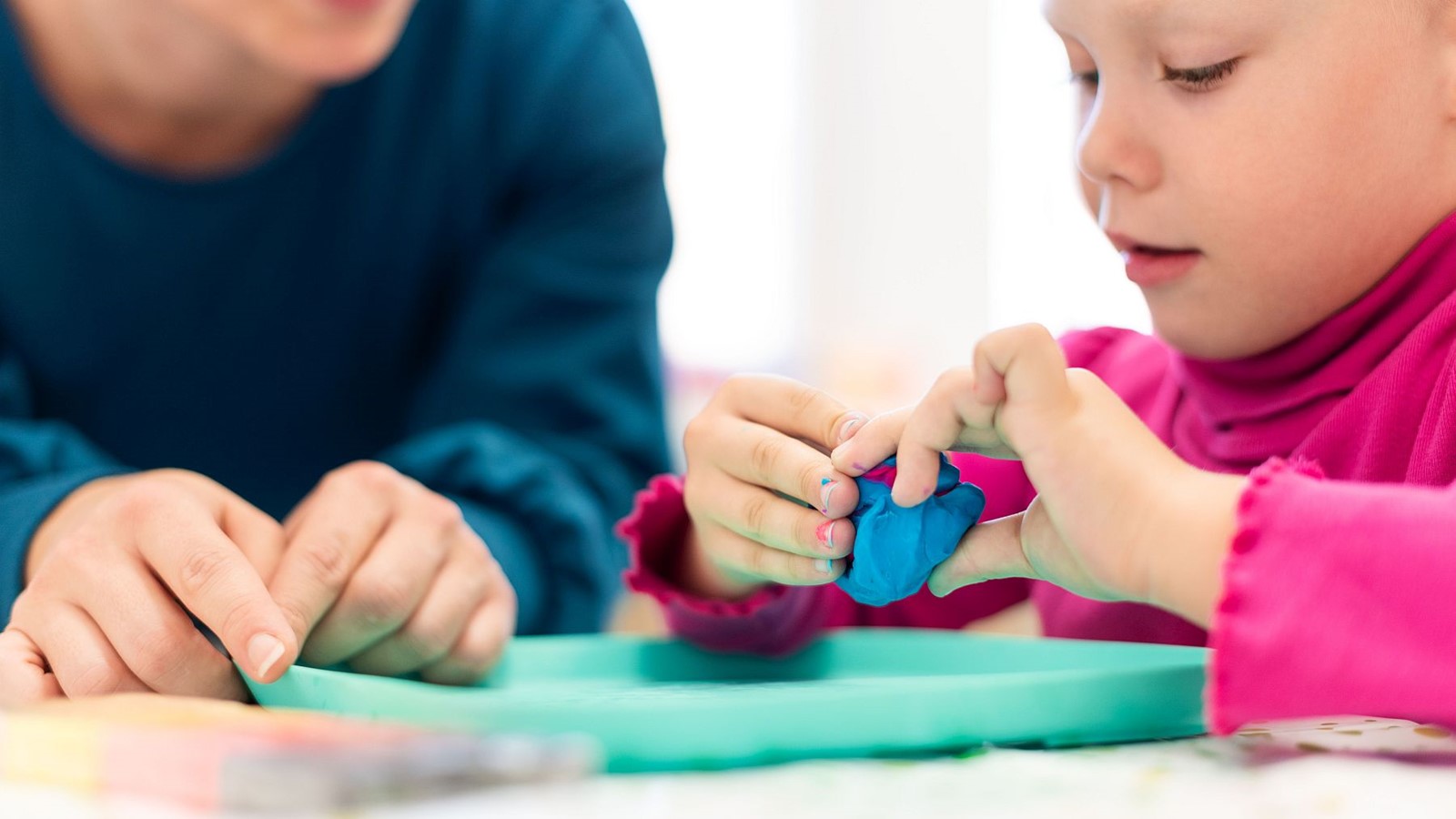Play therapy uses play as a way of helping people understand and express their thoughts and feelings.
It’s mainly used with children who may not be able to put how they are feeling into words. Play therapy helps them to communicate at their own level using everyday play things. This can help them learn to cope with what they’re going through, to develop and to build relationships with others.
Susannah Bradley, a play therapist, says: “Play therapy is a fantastic way of giving someone a way of exploring their feelings and emotions if they don’t have the vocabulary to understand or explain these feelings. It can give them the tools they need to develop relationships in the future and to believe in themselves.”
How does play therapy work?
Children naturally learn and develop through play. Play therapy builds on this with the support and expertise of a trained therapist.
“We work with children to help them access important thoughts and feelings they don’t realise they have,” says Susannah.
There are many different ways of using play in therapy – for example musical instruments, books, sand trays, arts and crafts, messy play. It can also include role play, where children might dress up or play out difficult experiences with small figures, soft toys or puppets.
They can explore their emotions and ‘practise’ how they respond and behave in the safety of a therapy room and with the support of a therapist. Then they can use the skills they’ve learnt outside the therapy room.
Susannah adds: “Children need to know that the play therapy session is ‘their time’. It allows them to have an interest in themselves and to know that they're worthy of someone’s time and attention.”
What does a play therapist do?
A play therapist will introduce a child to a large selection of play materials and let them choose what they want to play with.
“It’s mainly child led," says Susannah. "As play therapists, we don’t interpret, we don’t react, we don’t judge."
For example, a child might play with puppets during the session, and the therapist might join in too. Their imaginary play may represent real social situations which can help the child to explore their own behaviour and responses.
The relationship with the therapist is very important to ensure the child knows they’re supported, understood, safe and able to explore their feelings.
“It may take five or six sessions, but building up a good, trusting relationship with the child is absolutely key," she says. "Some children have never had that before.”
What can play therapy help with?
Play therapy can help with a variety of issues and circumstances, including trauma, bereavement, anxiety and depression. It may be of help for children who have attention deficit hyperactivity disorder (ADHD) or autism spectrum disorder (ASD), or whose behaviour and anger are becoming problematic.
It can also have benefits for children who are dealing with their parents’ separation or divorce, who’ve experienced domestic violence or abuse, or who are in hospital or care.
Can play therapy help adults?
Play therapy can also be helpful for adults who struggle to communicate how they feel.
It provides a comfortable and safe environment for people to explore the issues they're facing, using the creativity that’s inherent in everyone. Says Susannah: “Just like with children, it’s about accessing the unconscious, breaking down barriers and unlocking something that helps people explore and express their emotions.”
Play therapy often uses metaphors. The toys or creative aids become symbols that represent feelings, experiences, situations and people. It’s tailored to the individual needs of the client and will be different for everyone.
How can you find a play therapist?
Play therapists should be registered with Play Therapy UK, a professional body that has a Professional Standards Authority (PSA) accredited register, like BACP. This means they have to meet professional and ethical standards and have undergone a minimum level of training.
You can find qualified and registered play therapists on the BACP Directory.
Want to know more?

What therapy can help with
An A-Z list of issues and concerns which may be helped by talking to a counsellor.

What is counselling?
Find out how counselling works, what therapists do and what happens in a therapy session.

Therapist Directory
How to use our online therapist directory to search for a counsellor or psychotherapist by location, services or specialisms
